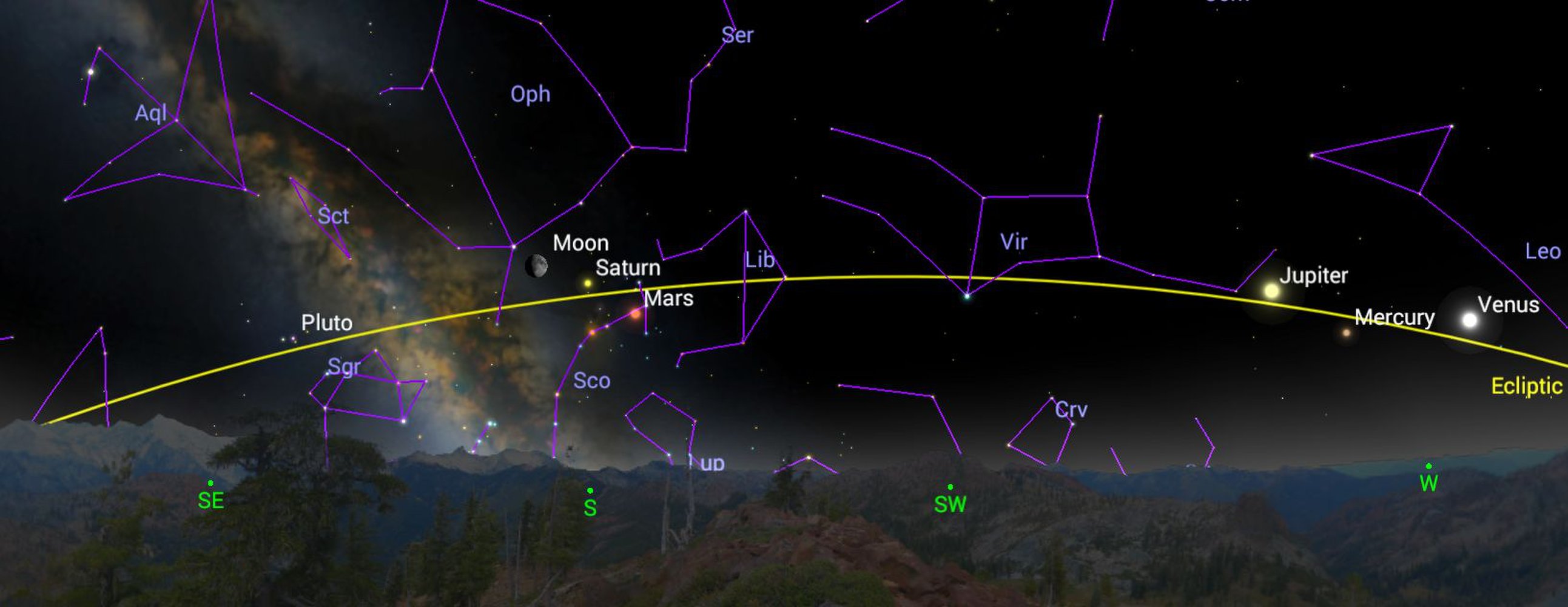
The ecliptic, as astronomers call it, is the apparent path of the sun against the background of the stars in the sky.
It’s useful because it tells us how to find the planets in the sky. They can be hard to spot if you don’t know where to look, but they will always be somewhere along one imaginary line that arcs across the sky—the ecliptic.
This pattern never changes. The planets don’t follow the ecliptic exactly, but it’s useful for getting an idea of where they should be.
But why does it work—and what exactly does it mean, when it’s obvious we can’t see the sun among the stars of the night sky?
Continue reading
